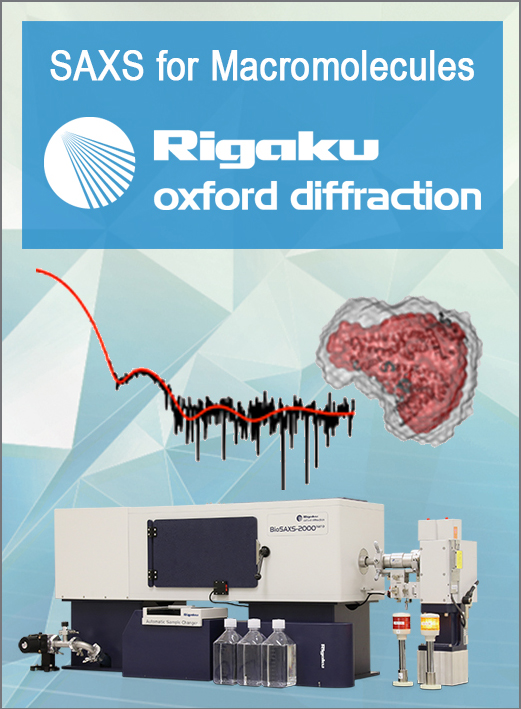


Advertising feature
The MORPHEUS III protein crystallization screen: at the frontier of drug discovery
![Morpheus thumbnail [Morpheus]](https://www.iucr.org/__data/assets/image/0018/137502/gorrec_thumbnail2.png)
Q&A with Fabrice Gorrec, inventor of the screen
Dr Gorrec has participated in the development of innovative technologies applied to protein crystallization for over 15 years, including microplates (e.g. TOPAZ), liquid handlers (e.g. dragonfly) and initial screens (e.g. MORPHEUS). Since 2007, Fabrice has been responsible for the crystallization facility at the Medical Research Council Laboratory of Molecular Biology (MRC-LMB, Cambridge, UK) where he invented and developed the 96-condition MORPHEUS protein crystallization screens. The corresponding approach to formulation has recently been presented as part of the IUCr's webinar series.
Why are you developing more crystallization screens?
The novel samples required to study biological mechanisms at the atomic level are increasingly challenging to produce and crystallize. Besides, there are additional difficulties in making X-ray crystallography amenable to the discovery of drug compounds (Müller, 2017). Subsequently, innovations that enhance the yield of useful crystals are urgently required. The original MORPHEUS (Gorrec, 2009) has proven to be a very efficient protein crystallization screen in the long term for a broad variety of protein samples, and the first follow-up, MORPHEUS II (Gorrec, 2015), has started to have an impact for many research groups (Fig. 1). To date, MORPHEUS conditions have been mentioned 317 times in the (vastly unreported) field 'crystal growth procedures' in the Protein Data Bank (PDB).
![[Morpheus Figure 1]](https://www.iucr.org/__data/assets/image/0005/136904/Morpheus-Figure-1.png) Figure 1. Examples of crystal structures solved after using either MORPHEUS I or II. A, Human Ovarian Tumor Deubiquitinase (OTU DUB1) (Mevissen et al., 2013; PDB ID: 4BOP). The 16 human OTU DUBs cleave distinct sets of ubiquitin chain types. B, Integral Membrane Protein CAAX Protease Ste24p (from Pryor et al., "Structure of the Integral Membrane Protein CAAX Protease Ste24p", Science, 339, 2013, reprinted with permission from AAAS), a zinc metalloprotease involved in two proteolytic steps for the maturation of yeast mating pheromone a-factor. C, Cmr2 from Pyrococcus furiosus (Benda et al., 2014; PDB ID: 4W8Y). The Cmr complex is an RNA-guided endonuclease that cleaves foreign RNA targets as part of the CRISPR prokaryotic defense system. D, Klebsiella pneumoniae 3,4-dihydroxybenzoicacid decarboxylase (AroY), an enzyme involved in para-carboxylation of catechols (Payer et al., 2017; PDB ID: 5O3M).
Figure 1. Examples of crystal structures solved after using either MORPHEUS I or II. A, Human Ovarian Tumor Deubiquitinase (OTU DUB1) (Mevissen et al., 2013; PDB ID: 4BOP). The 16 human OTU DUBs cleave distinct sets of ubiquitin chain types. B, Integral Membrane Protein CAAX Protease Ste24p (from Pryor et al., "Structure of the Integral Membrane Protein CAAX Protease Ste24p", Science, 339, 2013, reprinted with permission from AAAS), a zinc metalloprotease involved in two proteolytic steps for the maturation of yeast mating pheromone a-factor. C, Cmr2 from Pyrococcus furiosus (Benda et al., 2014; PDB ID: 4W8Y). The Cmr complex is an RNA-guided endonuclease that cleaves foreign RNA targets as part of the CRISPR prokaryotic defense system. D, Klebsiella pneumoniae 3,4-dihydroxybenzoicacid decarboxylase (AroY), an enzyme involved in para-carboxylation of catechols (Payer et al., 2017; PDB ID: 5O3M).
What about MORPHEUS III?
The main ideas behind the formulation of the new screen were the same as those for MORPHEUS I and II, which are essentially:
- Increasing the chances of crystal nucleation and growth by integrating mixes of additives that can act as stabilizers, cross-linkers, etc. (McPherson & Cudney, 2006).
- Providing systematic approaches to selecting the reagents and formulating the screen, including the integration of ligands found in the PDB.
- Enhancing pragmatic ways to facilitate the steps towards structure solution, notably with cryoprotected conditions.
The novelty in MORPHEUS III is the integration of small drug-like compounds as additives (average MW = 248 Da). To some extent, the approach can be compared to fragment-based lead discovery (Blundell, 2017). In this perspective, MORPHEUS III is at the frontier of drug discovery. The primary aim, however, is still to obtain useful crystals from a broad variety of novel samples.
The final formulation of the new 96-condition crystallization screen integrates 44 compounds overall, divided into 8 mixes of additives. Each mix of additive is combined with 4 cryoprotected precipitant mixes and 3 buffer systems to form a three-dimensional grid (see Fig. 2). The set of single compounds has been used to formulate an additive screen called HIPPOCRATES. It will be interesting to search the PDB for MORPHEUS III compounds in the future and see if they are more represented because they were integrated into commercially available screening kits.
![[Morpheus Figure 2]](https://www.iucr.org/__data/assets/image/0006/136905/Morpheus-Figure-2.png) Figure 2. MORPHEUS III represented according to the standard 96-condition screen layout. The screen is a 3D grid composed of 8 additive mixes (dipeptides, vitamins, nucleosides etc.), 4 cryoprotecting precipitant mixes (e.g. PEG 4000 with glycerol) and 3 buffer systems (pH 6.5, 7.5 and 8.5).
Figure 2. MORPHEUS III represented according to the standard 96-condition screen layout. The screen is a 3D grid composed of 8 additive mixes (dipeptides, vitamins, nucleosides etc.), 4 cryoprotecting precipitant mixes (e.g. PEG 4000 with glycerol) and 3 buffer systems (pH 6.5, 7.5 and 8.5).
Can you tell us more about the small drug-like compounds used as additives?
Surprisingly, well known drug compounds, with a more or less wide scope of binding potency, were not found to be particularly well represented in the PDB, such as the anaesthetic lidocaine, the antimalarial quinine and the antibiotic ampicillin (found ordered in 0, 3 and 8 PDB macromolecular structures, respectively). The initial selection of additives could therefore not be strictly based on a PDB search. Instead, lists of phytochemicals (including quinine, menthol, caffeic acid etc.) and essential medicines (including notably antibiotics, see Fig. 3) were consulted. Other types of compounds were tested to complete the formulation, such as nucleosides (e.g. thymidine found in 44 PDB structures) and cholic acid derivatives (e.g. CHAPS, 57 structures). The selection had to be restricted to compounds that are soluble and stable enough in water (or ethanol solution) and, later, in the MORPHEUS conditions.
![[Morpheus Figure 3]](https://www.iucr.org/__data/assets/image/0007/136906/Morpheus-Figure-3.png) Figure 3. The 6 reagents forming the MORPHEUS III additive mix named ‘Antibiotics’ (conditions F1-F12). Note that bacitracin is an extraordinarily large compound (MW = 1422 Da) compared with all the other compounds used as additives in the screen (average MW = 248 Da).
Figure 3. The 6 reagents forming the MORPHEUS III additive mix named ‘Antibiotics’ (conditions F1-F12). Note that bacitracin is an extraordinarily large compound (MW = 1422 Da) compared with all the other compounds used as additives in the screen (average MW = 248 Da).
Ultimately, cost-effectiveness had to be taken into account. It would be interesting to further develop the concept of combining crystallization and compound screening for specific drug targets, with (more costly) reagents adapted to advanced drug-design projects (Turnbull et al., 2017).
Is MORPHEUS III more efficient than other crystallization screens?
MORPHEUS III was formulated to minimize the number of initial conditions employed (by integrating more reagents than traditionally used in each condition). In addition, the final choices of formulation are based on results from crystallization against a broad variety of novel samples produced at MRC-LMB. Consequently, the additives are not under-sampled and the screen is not biased towards a specific subset of protein samples.
Nonetheless, when facing unpredictability from a multitude of variables, 96 conditions are simply too few to cover the 'chemical space' efficiently. You should ideally proceed with many more conditions and different formulation strategies that complement each other. From this perspective, the relevance of MORPHEUS III was demonstrated when useful crystals were obtained that were not observed in many other screening kits (see Case study of MYC:MAX bHLHZip complex below).
Finally, what is the price of a novel macromolecular structure? The price of a structure with bound ligands? When an initial crystallization screen plays an essential part in the process, less time is spent on optimization of the sample, crystallization and crystal screening. This means a gain in effectiveness overall.
I would like to thank Jan Löwe and Olga Perisic (MRC-LMB) for their support in all aspects of this work. I also thank Jo Westmoreland (MRC-LMB, Visual Aids) and Rachel Kramer Green (PDB) for technical support. LifeArc commercializes the MORPHEUS screens and derivative products (under exclusive licence to Molecular Dimensions Ltd, Newmarket, UK).
Case study of MYC:MAX bHLHZip complex by Giovanna Zinzalla
Dr Zinzalla is currently an Assistant Professor in Chemical Biology at the Karolinska Institutet (Stockholm, Sweden). Her research is focused on determining how the MYC pleiotropic transcription modulator integrates fundamental processes required for proliferation and survival of normal and malignant cells. Her approach involves MYC structure-function studies and the use of chemical probes to modulate the MYC network of protein-protein interactions that coordinate the expression of a large and extremely diverse set of genes, with the ultimate goal of developing new therapeutics.
The basic helix-loop-helix leucine zipper (bHLHZip) region of MYC binds to the obligate-partner MAX. A better understanding of the MYC:MAX bHLHZip complex is essential for anticancer drug discovery (Soucek et al., 2008; Zinzalla, 2016). Therefore, Giovanna has been carrying out extensive biophysical and structural studies on this complex (NMR and X-ray crystallography). Previously, this system has only been crystallized in the presence of DNA (Nair & Burley, 2003), the underlying reason being that the complex is very dynamic in the absence of DNA and hence particularly challenging to crystallize. For drug discovery purposes however, a crystal structure of the free form is essential in enabling the development of synthetic molecules that inhibit the MYC:MAX interaction and binding to DNA.
In an attempt to increase the yield of useful crystals for a sample of c-MYC:MAX bHLHZ, Giovanna employed an unusually large initial screen composed of 2112 initial conditions at the MRC-LMB crystallization facility (Gorrec & Löwe, 2018). The screen included the MORPHEUS kits, among many others. After an extensive crystal screening of the various hits obtained, it was observed that only the crystals from a MORPHEUS III condition enabled structure solution with 1.35 Å resolution (manuscript submitted).
References
Benda, C. et al. (2014). Mol. Cell. 56, 43-54.
Blundell, T. L. (2017). IUCrJ, 4, 308-321.
Gorrec, F. (2009). J. Appl. Cryst. 42, 1035-1042.
Gorrec, F. (2015). Acta Cryst. F71, 831-837.
Gorrec, F. & Löwe, J. (2018). J. Vis. Exp. 131, e55790, https://doi.org/10.3791/55790.
McPherson, A. & Cudney, B. (2006). J. Struct. Biol. 156, 387-406.
Mevissen, T. E. T. et al. (2013). Cell, 154, 169-184.
Müller, I. (2017). Acta Cryst. D73, 79-92.
Nair, S. K. & Burley, S. K. (2003). Cell, 112, 193-205.
Payer, S. E. et al. (2017). Angew. Chem. Int. Ed. 56, 13893-13897.
Pryor, E. E. Jr et al. (2013). Science, 339, 1600-1604.
Soucek, L. et al. (2008). Nature, 455, 679-683.
Turnbull, A. P. et al. (2017). Nature, 550, 481-486.
Zinzalla, G. (2016). Future Med. Chem. 8, 1899-1902.
Copyright © - All Rights Reserved - International Union of Crystallography




